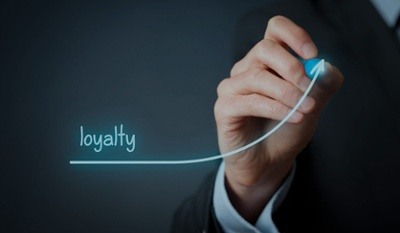What is a loyalty program?
In most stores and businesses, it is much more expensive (up to 5 times more expensive) to get new customers than to sell to customers who already...
By Role
By Industry
By Target Customer
What We Offer
We drive business growth by improving operational efficiency through process optimization, smart automation, and cost control. Our approach boosts productivity, reduces expenses, and increases profitability with scalable, sustainable solutions
Customer Experience
We design memorable, customer-centered experiences that drive loyalty, enhance support, and optimize every stage of the journey. From maturity frameworks and experience maps to loyalty programs, service design, and feedback analysis, we help brands deeply connect with users and grow sustainably.
Marketing & Sales
We drive marketing and sales strategies that combine technology, creativity, and analytics to accelerate growth. From value proposition design and AI-driven automation to inbound, ABM, and sales enablement strategies, we help businesses attract, convert, and retain customers effectively and profitably.
Pricing & Revenue
We optimize pricing and revenue through data-driven strategies and integrated planning. From profitability modeling and margin analysis to demand management and sales forecasting, we help maximize financial performance and business competitiveness.
Digital Transformation
We accelerate digital transformation by aligning strategy, processes and technology. From operating model definition and intelligent automation to CRM implementation, artificial intelligence and digital channels, we help organizations adapt, scale and lead in changing and competitive environments.
Operational Efficiency
We enhance operational efficiency through process optimization, intelligent automation, and cost control. From cost reduction strategies and process redesign to RPA and value analysis, we help businesses boost productivity, agility, and sustainable profitability.
Customer Experience
Marketing & Sales
Pricing & Revenue
Digital Transformation
Operational Efficiency
Customer loyalty programs are at their core, mechanisms used to alter the behavior of specific customers. However, the behaviors that brands want from their customers can be quite different from each other, depending on their business model and competitive situation. If you can't identify your customers across channels, stores or business units at this time, a loyalty program can help you do so. Or also, if you can keep track of your customers individually, but have few opportunities to interact with them, a loyalty program can provide you with more opportunities to do so.
On the other hand, if your brand already has the means to create and manage individual and highly interactive relationships with customers, then it will facilitate the way to raise the CLTV (Customer Lifetime Value), which is very briefly in knowing how much a client benefits me monetarily versus the cost I had in acquiring it. At the end of the day, that is the goal of any loyalty strategy, whether it is altering behaviors so that the customer buys again or understanding how they buy to be able to encourage larger purchases, what we want is to increase the average ticket throughout weather.
In the last two decades in big markets, loyalty programs of all kinds have been implemented by companies of different categories and have become familiar to consumers. In the Latin American market, it could be said that two decades is a lot to say, however, during the last decade these programs have been standardized, especially since customers like it a lot and feel part of the brand that they enjoy.
Here are 5 tips and good practices to align your loyalty program strategy with your business strategies:
As I mention frequently, understanding your consumer is always key to any strategy. Never miss an opportunity to learn about a customer, as it can dramatically improve the experience and satisfaction you experience through our brand. One of the ways that the most mature and best-practice loyalty programs use is that they offer a choice of services or treatments as a reward, and this choice itself will reveal something about a customer. For example, in a member recruitment drive, an automotive company offered a free incentive option to all new members: a pair of racing gloves with the car brand logo, a map of places to visit, or a three-video pack for kids. Obviously, the choice of each new member would reveal a lot about that member's needs and preferences when interacting with that company.
It is an incredibly good practice for the loyalty program to be structured through modules, since they allow participants to mix and match aspects according to their own preferences. Modular incentives are a practical way to enable customer-facing personalization without going to the extreme of complete (and expensive) personalization. Organizations can come up with various alternatives to the fundamentals of a program, such as member qualification, for example, and can offer clients a set of guided options to choose from.
Modularity is also essential for a loyalty program to conform to the omnichannel data that the company manages and therefore work effectively in multiple channels, such as online, in mobile applications and in a physical store. Mechanisms for earning or redeeming points should be easy to connect to a company's back-office systems, whether incoming customer requests come from the website, call center, or point-of-sale system, for example. This will benefit us in terms of customer service, since whatever our point of contact, we always have the same information.
A program with fewer rules and restrictions is more attractive and reliable for the client. It's best to narrow down your reward offers to those that can be safely delivered, rather than include items that cannot be trusted simply because they may not be available. Every time a frequent flyer tries to redeem miles and is frustrated by the lack of available "mileage seats", his confidence in the airline decreases, and therefore also his probability of buyback with the same.
Companies that cannot confidently deliver on what their loyalty marketing strategy offered run the risk of losing the trust that the customer has placed in their brand. Remember, trust is hard to gain, but it is lost in quite simple ways. Therefore, while it is important to manage the supply of free and discounted products in an economical way, companies will be better off not offering deeply discounted rewards if they cannot make them available to most loyalty program members who are they will search.
All loyalty programs should be managed based on the relationships with customers participating in the programs, rather than the products offered, the channels used, or the regions served. CMOs must align the objectives of their loyalty programs with the objectives of their organization, making customer groups the direct responsibility of certain managers or management groups. They then need to measure those managers by the positive impact they have on customer behavior. For marketing, the acquisition of customers should be just as important as the treatment that is given to you as a customer.
Organize the marketing efforts of a loyalty program so that those customers whose behaviors we want to change are served by people whose annual evaluations are based on improving numbers for those customers. Not only will this be a genuine success insurer with a loyalty program, but it will also send a clear signal that progress needs to be made in every customer segment.
Relationship management also involves serving customers in real time, rather than mail order time or a billing cycle. For a retail business, this means having an omnichannel architecture at all points. It is important to link the point-of-sale system to the loyalty program, so that real-time offers and messages can be delivered to the customer during actual purchase transactions. And when a service failure occurs, an apology (sent by personalized email) to customers affected by a failure is more necessary than ever.
This apology could include an offer of coin from a loyalty program as compensation to help relieve the injured customer. Studies show that when a customer has service issue immediately fixed, or an apology presented, the relationship can improve, and the more immediate the response, the more dramatic the improvement.
Company loyalty programs are evolving towards increasingly open architectures driven by customer demand. For example, the Royal Bank of Canada's RBC rewards program allows members to freely exchange points with the "Esso Extra" program at Esso gas stations, building a coalition. In a coalition loyalty program, several companies participate from which customers can earn and redeem points. Since these programs offer participants more opportunities to earn points and more places to redeem points, they are generally well received by consumers. However, these coalitions must always be carried out with respect for obtaining data from consumers. Many third-party or broker-run coalition programs do not make detailed information about customer transactions available to point issuers. When this is the case, the loyalty program loses its meaning or direction, since the most important thing is the knowledge of my consumer.
The main benefit of a seller loyalty program is gaining data and understanding from individual customers, so the more options the consumer or member has, the better, but only if offering these options does not weaken the seller's ability. to get real-time customer information. Transferable points and rewards offer loyal customers the greatest flexibility in using program earnings. By showing customers that you understand what they want, you can increase their loyalty to your brand, beyond just providing rewards and points.
A successful loyalty program strategy offers valuable insights and helps build customer relationships by being open, modular and straightforward, and by offering rewards that not only interest individual customers but also encourage them to act. that align with the company's business objectives. When the loyalty program best practices are put into practice, your loyalty program marketing strategy can improve the customer experience, increase retention, and ultimately drive real business results.

In most stores and businesses, it is much more expensive (up to 5 times more expensive) to get new customers than to sell to customers who already...

In today's fast-paced and ever-evolving marketplace, customer loyalty is the cornerstone of long-term business success.

Have you ever wondered why some companies have loyal and committed customers while others seem to have a constant turnover of new customers?